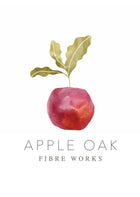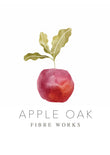



COCHINEAL DYE ~ Dye colours red, pinks to purples
Origin: Canary Islands, Spain. Organically farmed and processed by Canaturex
I am so delighted to have finally found some organic Cochineal. Lorenzo is one of the very first offering fully traceable Cochineal grown to organic principals.
Cochineal, a powerful dye sourced from tiny insects that feed on cacti, produces stunning shades of purple, red and pink. With just one dye bath, this incredible insect can create a range of hues, from deep, rich reds to delicate, fairy-like pinks. It is derived from the Dactylopius species of insects, and its body contains 19-22% carminic acid.
*To make one kilogram of cochineal dye, it takes about 80,000 to 100,000 insects.
Excellent colour fastness is guaranteed.
---------------------
Recipe for Wool Fibres: Downloadable PDF
Recipe For Plant Fibres: Downloadable PDF
Basic recipe:
6% Cochineal
Wool yarn mordanted with Alum 10%
Soak Cochineal in Water overnight
blend using a stick blender
Add dye to dye bath
Bring to a simmer
Remove any black tar like bubbles
Strain through a cloth and keep to the side
Add yarn to bath simmer for one hour.
Add dye bag to second and any following dye baths.


